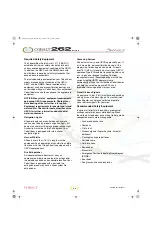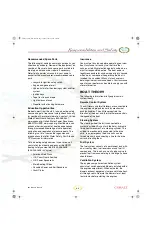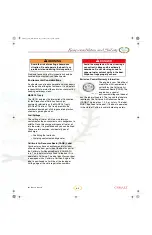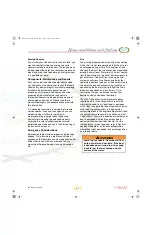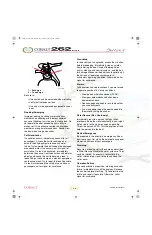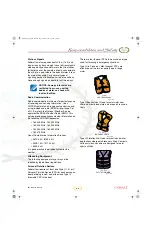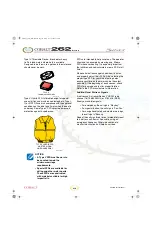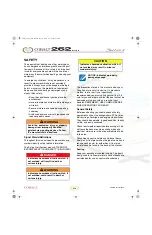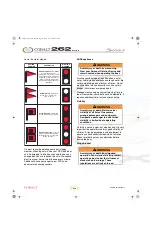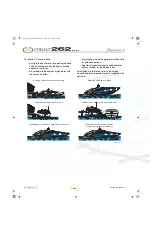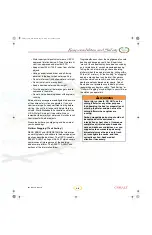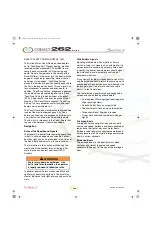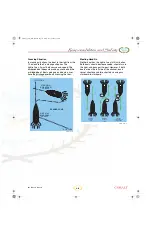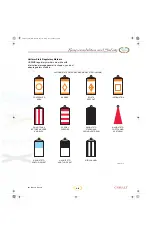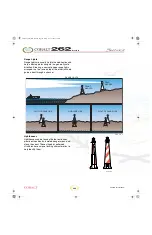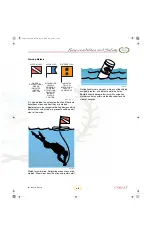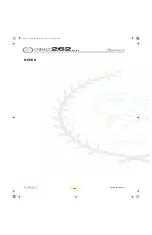
262 Owner’s Manual
2-13
Responsibilities and Safety
Handholds
Handholds are provided for your passengers’
safety. Be sure your passengers use the handholds
whenever the boat is underway. Failure to use
handholds could result in a man overboard situation
or personal injury.
Capacity
Know the weight capacity of your boat. Do not
overload your boat. Overloading of passengers,
personal equipment and supplies could result in an
accident, especially in rough waters.
Loading
Be sure that passengers, personal equipment and
supplies are in their proper location before
operating the boat. It does not necessarily mean
you can carry a passenger for every seat. Keep
personal equipment and supplies to an “as needed”
basis. Maintain a balanced load (front to back and
side to side) at all times.
Operating Conditions
Every waterway poses hazards that you should
avoid, such as shallow water, tree stumps and sand
bars. Ask local boaters for information and consult
a marine chart when boating on unfamiliar waters.
As the operator of the boat, you should try to avoid
all hazards, known and unknown. The following
information does not contain all possible water
hazards. Operating in shallow water presents a
number of hazards. Mud, sand, weeds and debris
can foul a propulsion unit propeller or its cooling
water. If a propulsion unit strikes an underwater
object, check the propulsion unit and boat for
damage. If a propulsion unit vibrates after striking
an object, it may indicate a damaged propeller.
Sand bars in narrow inlets are constantly shifting,
making it difficult to mark them with buoys. Tides in
coastal areas affect water levels producing sand
bars. Sometimes sand bars are indicated by waves
as they form into breakers when passing over the
sand bar. Refer to
Grounding
, in this section, if you
run aground on a sand bar. The water level around
a dam spillway is a hazardous area. It is subject to
rapid changes caused by currents and turbulence.
Keep clear of the spillway areas below dams.
Weather/Seas
Getting caught in severe weather is hazardous. It is
recommended to check the weather, sea and wind
conditions not only before, but, periodically while
you are boating. Refer to
Radio Communications
,
in this section, for weather channel information. A
change in wave height, wind direction and speed
indicates deteriorating weather. Take common
sense precautions if you are forced to operate your
boat in stormy conditions:
• Wear PFDs.
• Stow gear below deck and batten down
equipment on deck.
• Reduce speed and head for a safe place that
you can easily reach.
If you lose power, keep the boat headed into the
waves by using the anchor.
A
WARNING
Avoid injury or death.
• Passengers should use handholds
whenever the boat is underway.
• Do not allow passengers to sit on or in
the stern sun lounges when the boat is
underway.
• Read and understand this manual and
the propulsion unit manual, and be
sure that you understand all controls
and operating instructions before
attempting to operate the boat.
• Be in control of your boat. Do not
operate your boat under the influence
of alcohol or other drugs.
COB_262_OM_forWeb.book Page 13 Friday, June 9, 2006 3:14 PM
Содержание 250 BOWRIDER
Страница 6: ...vi 262 Owner s Manual Bowrider NOTES COB_262_OM_forWeb book Page vi Friday June 9 2006 3 14 PM ...
Страница 52: ...2 28 262 Owner s Manual Section 2 Bowrider NOTES COB_262_OM_forWeb book Page 28 Friday June 9 2006 3 14 PM ...
Страница 90: ...3 38 262 Owner s Manual Section 3 Bowrider NOTES COB_262_OM_forWeb book Page 38 Friday June 9 2006 3 14 PM ...
Страница 100: ...4 10 262 Owner s Manual Section 4 Bowrider NOTES COB_262_OM_forWeb book Page 10 Friday June 9 2006 3 14 PM ...
Страница 118: ...6 10 Section 6 Bowrider NOTES COB_262_OM_forWeb book Page 10 Friday June 9 2006 3 14 PM ...




